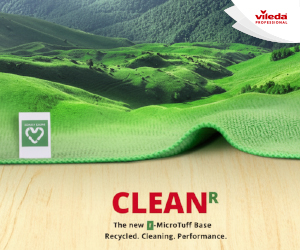Great strides forwards are being made every year in care equipment and furniture, in terms of innovation, design and functionality, all with the aim of improving the lives of both patients and nurses. In this article, Tristan Hulbert, Marketing & Innovation Director of healthcare equipment manufacturer Innova Care Concepts, explains how hospital furniture has evolved over the last few years, and what to consider when specifying new equipment.
The world around us is ever changing. The technology revolution has sped ahead and continues to move forwards at an alarming rate. Every day, breakthroughs are being made around the world in medical science. Incredible discoveries are being arrived at, opening our eyes to new medications, and teaching us facts about disease that we’d never known before.
The media places great emphasis on news of treatments that might improve our quality of life and survival rates against disease, and rightly so. But what about the healthcare equipment in daily use around the world; in private dwellings, care institutions, and of course, in hospitals?
Many people, even those who have worked in a hospital environment for decades, never really consider how healthcare furniture has changed. If you stop and think, turning back the clock in your mind’s eye by 30 years, your entire perception changes. Think about the beds, the bedside cabinets, the seating in hospital wards. Many of the products that were perceived as cutting-edge back in the eighties wouldn’t be given room in a hospital these days.
Drivers of innovation
There are a whole host of factors that have contributed to this drive for change and innovation in hospital equipment. The technology revolution has obviously played a part, with more and more items now inter-connected in the ‘Internet of Things’, or incorporating advanced
sensors to monitor the patient’s condition. Examples of this include Innova’s Interlude electric profiling bed range, which can incorporate a sophisticated in-built weighing device, or the Somlent Genius mattress, which uses a digital sensor system that is so advanced that pressure is redistributed instantaneously at the slightest change in patient position.
Infection control is a huge subject these days, and a topic which was almost non-existent a few decades ago. With specific hospital departments focusing on the prevention and control of infection-related diseases, demands to ‘design bugs out’ of equipment continue to increase. As manufacturers like Innova have pioneered new materials and unveiled new manufacturing methods, other companies have been forced to change their hospital furniture offering to catch up with the new, accepted standards. Nowadays, furniture is often constructed from materials such as HPL (High Pressure Laminate), aluminium, and plastics with anti-bacterial properties. Gaps and crevices are often either sealed or designed out and surfaces are easy to clean. Hospital mattresses, such as the Somlent range, have welded seams and antifungal and antibacterial covers which incorporate silver ions for the ultimate in infection prevention.
The breakthroughs in medical science alluded to earlier have also played their part in the evolution of hospital furniture. As knowledge of specific conditions and treatments has increased, hospitals have begun requesting more diverse and specialist equipment. A case in point is the increase in awareness of pressure ulcers. It is widely known that pressure damage costs the NHS in the region of a staggering 4% of the annual budget. This figure cannot be ignored, so both scientific and commercial organisations have been researching the causes of pressure ulcers. There’s been an explosion of ideas and developments, such as auto-regression backrest mechanisms on Interlude hospital beds to reduce shear, the formulation of bi-elastical covers on Somlent mattresses to minimise friction forces, and the introduction of 3-way alternating air mattress systems for pressure reduction.
As there are so many different interested parties in the area of pressure care, a far more holistic approach has been taken to product development. A good illustration of this is the industry trend towards ‘hybrid’ mattresses. The Somlent Serene is one of these new mattresses, and features foam inside sealed air cells. This offers much better pressure reduction than traditional foam mattresses, but the key to the thinking behind it is that as soon as a patient is at greater risk of pressure damage, the nurse can simply and quickly plug an air compressor into the mattress. By transforming it into a dynamic air system in just minutes no further equipment is required, so there is no need for additional inventory or storage space. A number of pressure ulcers were found to occur whilst waiting for a higher grade mattress to arrive at the ward, so these incidents no longer occur.
There have also been changes in demographics of the UK population which have had an effect on product design. One of the best known examples has to be the increase in the population of bariatric patients. Equipment safe working loads are forever rising to meet these new-found needs. There’s even a patient lifting hoist unit, the AirRise500, which has a weight limit of half a ton!
How does it look & function?
Perhaps one of the most obvious changes to hospital furniture is in aesthetics. Some manufacturers place great emphasis on the appearance of equipment, also giving colour and material options to enable hospitals to décor match to their other furniture or design styles.
Evidence has proven that providing the right healing environment can help reduce patient stress levels. The healing process is not the same as curing, it’s about decreasing symptoms and fixing problems so that the sufferer can feel as comfortable and relaxed as possible. Designers around the world are striving to incorporate these new healing ideas that they have gained through studies into new hospital equipment. One such product, which has met with much acclaim, is the Integralift, a completely new concept in patient hoisting. When not in use, the hoist is hidden away in cupboards or in a bed head unit, which also houses other equipment such as medical gases. Patients don’t even realise that there is a hoist in the room, allowing them to relax in a tasteful, uncluttered and welcoming space.
When developing new products for a hospital setting, a good product design team considers many other factors as well as the ones mentioned above. With the increasing population, space is at a premium in hospital rooms, so products such as folding wall beds and the Interlude attendant couch are becoming more and more popular, particularly in children’s wards where parents or relatives may need to stay the night with their child.
Patient falls are estimated to cost the NHS more than £2.3 billion per year, so this is an important consideration when developing furniture. Preventing injury to nurses is another key point, and equipment may need to be height adjustable to facilitate easier manual handling techniques. With the shortage of nursing staff, there is a big drive towards greater efficiencies for nurses, so each function of hospital furniture needs to be simple, quick, and easy to use.
A complex process
There are plenty of other factors which shape the design of hospital furniture, such as environmental needs, durability, and functions for nursing and hygiene procedures. Anyone who has been involved in the design and prototype stages will understand that hospital product development is a huge undertaking with a lot of deep thinking involved! Happily time in these stages has been reduced and innovations can make a difference quicker than they used to be able to, thanks to advanced design software and the 3D printing revolution.
As with the ongoing research in the world of medical science, continuous innovation in healthcare equipment and furniture is crucial. Without constant design improvements and innovation, hospitals will struggle to keep up with the quickening pace of treatment, the growing population, and the ever-increasing complexities of patient needs. The message to hospitals carrying out new-builds and refurbishments is simple: embrace change, look for new ideas, and don’t be afraid to adopt them. Every one of what we now consider to be an essential feature of healthcare beds, mattresses, and other ward furniture was once a new idea. It’s worth bearing in mind how far hospital furniture has come in 30 years, simply because hospitals have accepted innovation and new concepts.
In-depth product trials are absolutely key before purchasing ward furniture, however, as every hospital has different needs, expectations, and requirements. Innova Care Concepts recently had a number of bedside cabinets, attendant couches, wheeled patient chairs, and manual reclining chairs on trial at an NHS England Hospital. The trial confirmed that the equipment worked well for them, but some small changes were required to meet their specific needs. New trial equipment was manufactured and loaned to the Trust, and the products were confirmed as fully suitable for purchase. This brings us onto another key point to look for in a
ward furniture supplier: flexibility. As the needs of every ward can differ, be sure to work with a company who can change products to suit your needs.
Trusts should also check on the durability and origin of the products. How long does the equipment need to last? What’s the manufacturer’s design life for the items? And how readily are spare parts available?
Choosing an experienced supplier with a wealth of knowledge and experience means the hospital Trust will benefit from qualified advice around their equipment needs and considerations, facilitating decision-making based on proven facts and data.










